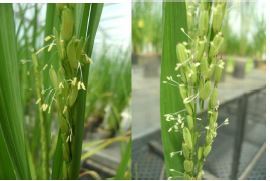#heat tolerance
Text
Hi everyone,
It’s been extremely hot this month, so I wanted to share some information about autism and heat intolerances. Here’s an excerpt from one article:
Beyond common medical conditions caused by extreme heat (e.g., exhaustion and heatstroke), individuals with autism often have sensory sensitivities affecting their ability to regulate temperature; their heat intolerance may be part of sensory difficulties. Our recent interviews with parents and professional care providers suggest, after exposure to high temperatures, children with autism are significantly more likely to have rapid and unstable mood shifts and present strong behavioural, emotional, and communication challenges. In addition, limited outdoor opportunities greatly affect children’s routines and space for daily activities, further intensifying their stress and anxiety.
The full article will be down below if you’d like to read more:
I found another article talking about heat tolerance. Here’s an excerpt from that article:
Autistic people face multiple challenges during heat waves. They may have difficulty understanding why they need to wear a hat, coat, or sunscreen. They may struggle with finding comfortable places to sit or lie down, and they may find it difficult to keep themselves cool and safe.
Some autistic people suffer from hyperthermia (overheating) and hypothermia (underheating). This means they don’t always respond well to changes in temperature. For example, some autistic people may become agitated when they get too warm. Others may become anxious when they get cold. If this happens, it could lead to sensory overload and an outburst.
Also, children on the autism spectrum are more easily triggered when dealing with hot weather. They may become very upset by the increased body temperature, which makes them less able to control their emotions. An autistic child may also be at greater risk of overheating because he has trouble regulating his own body temperature.
(I know this refers to children, but I think this could be applied to teenagers and adults).
This article from this excerpt will also be below if anyone wants to read through it:
I hope many of you find this helpful. Stay cool, hydrated, and safe.
Autism
Heat Tolerance
#autism#actually autistic#heatwave#heat tolerance#autism & heat#autism and health#physical health#stay hydrated#stay cool#be safe#feel free to share/reblog#tw bright colors#tw eye strain
174 notes
·
View notes
Text
OK, so, I've heard many autists mention that they have abnormal levels of heat tolerance or, in other words, don't feel heat and cold with the same ease and intensity allistics do.
But I was wondering if anyone else is just specifically sensitive to either cold or heat.
Like, I feel cold very easily, but can wear a hoodie during summer with no problems and a friend of mine is the exact opposite.
Is this an autism thing or are we just weird?
#autism#asd#autism spectrum disorder#autistic things#is it the autism?#help#i'm autistic#just wondering#heat tolerance#is it a tag?#anyway#neurodivergence#neurodiverse stuff#neurospicy
32 notes
·
View notes
Text
My low heat tolerance is clashing with my punk aesthetic
2 notes
·
View notes
Text
Incredibly helpful as someone who works in a warehouse that doesn’t have A/C
#sorenhoots#resource#heat#staying cool#heat management#heat tolerance#tips#life hacks#sorry just tagging this as a ton of stuff so I can find it later#sorensfavs#okay that’ll help me find it for sure#idk what this news source is btw I just clicked a random link like a gullible fool and then found the content to be useful
12 notes
·
View notes
Text
What we know we don't know about animal tolerances to high temperatures
Each organism has a limit of tolerance to cold and hot temperatures. So, the closer it lives to those limits, the higher the chances of experiencing thermal stress and potentially dying. In our recent paper, we revise gaps in the knowledge of tolerance to high temperatures in cold-blooded animals (ectotherms), a diverse group mostly including amphibians and reptiles (> 16,000 species), fish (>…

View On WordPress
#biodiversity#climate change#conservation#conservation physiology#ecology#ecophysiology#ectotherms#extinction#Global warming#GlobTherm#heat tolerance#invertebrates#physiology#science#thermal tolerance#vertebrates
2 notes
·
View notes
Text
Heat Tolerance and Early Flowering QTLs Validation in IR64 Rice

Abstract
Heat stress reduces rice yield by 10% for every degree Celsius increase beyond optimum temperature. Field testing of IR64-derived near-isogenic lines with heat tolerance and early morning flowering QTLs was conducted at CSU Piat during hottest months of 2016-2017. To evaluate how well IR64 NILs tolerated heat, morpho-agronomic data were collected and analyzed when they were subjected to high temperature at field conditions. Flower opening time (FOT), the peak flowering time (PFT), and the time when all of the flowers are closed (FCT) were also determined for early morning flowering traits (EMF). Results showed that morpho-agronomic features of IR64-derived NILs such panicle length, number of tillers per hill, spikelet fertility, spikelet/panicle, plant height, days to 50% flowering and maturity were similar when compared to its recurrent parent. Moreover, EMF traits results revealed that IR64HT+EMF and IR64EMF NILs exhibited the earliest FOT, PFT, and CFT. This research under high temperature field condition clearly validated the heat tolerance performance of IR64-derived NILs had similar morpho-agronomic traits compared to its recurrent parent indicating recovery of recurrent parent genome. Furthermore, IR64HT+EMF and IR64EMF NILs exhibited the earliest FOT, PFT, and CFT indicating that the presence of qEMF3 and its combination with qHTSF4.1 strongly confers EMF traits as an escape mechanism from heat stress. The researchers recommend the use of genetic materials with combined genes of heat tolerance (qHTSF4.1) and early morning flowering (qEMF3) for these are useful germplasm for future and expected global warming.

Introduction
In rice, temperature above optimum levels affects all growth stages. Among these, the flowering stage is considered the most sensitive stage to high temperature (Satake and Yoshida, 1978; Yoshida et al., 1981). Heat-induced spikelet sterility results if the sensitive physiological processes of anther dehiscence, pollination, pollen germination on the stigma, and pollen tube growth are aggravated (Wassmann et al., 2009a). In the study of Jagadish et al. (2007), sterility was induced for less than 30 minutes of exposure to 35°C ambient temperature and 33.7°C spikelet tissue temperature during anthesis. However when spikelets opened either before or for more than an hour after the onset and exposure of high temperature, they were unaffected by the heat treatment (Jagadish et al., 2007).
Flowering is the most sensitive stage to high temperature in the rice life cycle. High temperature of over 35°C at flowering stage increases pollen and spikelet sterility, which leads to significant yield losses, low grain quality, and low harvest index. Large cultivar variation exists in the spikelet sensitivity to high temperature damage, and the primary cause of this cultivar variation in high temperature (heat) tolerance at flowering is the number of viable pollen grains shed on the stigma, resulting from the changes in the extent of anther dehiscence, which directly affect the spikelet fertility and grain yield. Thus, spikelet fertility under high temperature has been widely used as a screening index for heat tolerance at reproductive stage.
Heat tolerance is the ability of the plant to grow, develop, and produce an economic yield under high temperature stress (Wahid et al., 2007; Paupiere et al., 2014). There are three basic mechanisms of heat tolerance in plants: (1) true heat tolerance, where plants can shed a large amount of pollen or viable pollen able to germinate under heat stress and (2) heat avoidance, where the plant performs its sensitive functions (ie. fertilization) before the onset of the stress (Yoshida et al., 1981; Ishimaru et al., 2010). The latter can be done by several ways: macroescape (heading during the cooler parts of the season), and microescape (anther dehiscence occurring during the cooler parts of the morning) (Wassmann et al., 2009a); and (3) heat escape, by changing leaf orientation, efficient transpirational cooling of the canopy, reduction in non-photosynthetic energy intercepted by the canopy, and reflection of solar radiation (Bahuguna et al., 2014).
Significant genotypic variation had also been found for time of day of flowering (TDF) and early morning flowering (EMF) or peak anthesis in rice germplasm. It has been reported that O. glaberrima is an EMF wild rice species with the ability to flower immediately after dawn, and with more than 90% of spikelets nearing anthesis by 0900H (Prasad et al., 2006). Interspecific crosses were made between O. glaberrima and O. sativa, which produced lines that had significantly earlier peak anthesis hours than the original parent (Yoshida et al., 1981). Ishimaru et al. (2010) successfully introgressed the EMF trait from another wild rice, O. officinalis into Koshihikari (O. sativa), and the produced Koshihikari + EMF line can open its spikelets 2 hours earlier than the Koshihikari wild type. This adaptation allowed the line to garner higher spikelet fertility than others popular varieties lacking the EMF trait. The produced EMF introgression line was used to develop near-isogenic lines of Nanjing 11 (temperate cultivar) and IR64 (tropical/subtropical cultivar) and successfully and stably exhibited the EMF trait (Hirabayashi et al., 2014).
Redoña et al. (2009) expressed that identifying the quantitative trait loci (QTL) for heat tolerance and employing marker-assisted selection (MAS) could compensate for the difficulty of field screening and significantly improve the overall efficiency of the breeding process. Genomic techniques and tools like MAS can ease selection of target traits, that can be used to (1) identify, quantify, and characterize genetic variation; (2) tag, clone, and introgress genes and/or QTL; and (3) manipulate (eg. pyramid, integrate) genetic variation in breeding populations (Xu and Crouch, 2008). Genetic mapping studies for EMF and heat-tolerant QTLs during the reproductive stage of different rice populations have been undertaken (Jagadish et al., 2008; Ishimaru et al., 2010; Jagadish et al., 2010a; Xiao et al., 2011; Ye et al., 2012; Hirabayashi et al., 2014; Ye et al., 2016). In the mapping study conducted by Ye et al. (2012), four major heat-tolerance QTLs were identified from the progeny of IR64 x N22 cross, to which N22 is the heat-tolerant variety. Of the four chromosomal locations identified, QTLsqHTSF1.1 (on chromosome 1 of IR 64) and qHTSF4.1 (on chromosome 4 of N22) were confirmed to have the most significant role for increasing spikelet fertility under high temperature (Ye et al., 2012) and were found to be very close to major QTLs identified in the studies of Jagadish et al. (2010a) and Xiao et al. (2011). Between the two QTLs, plants with the qHTSF4.1 exhibited higher spikelet fertility than other genotypes, and was also detected and confirmed by Ye, et al. (2016) in an IR64/Giza 178 bi-parental cross and IR64/Milyang/Giza 178 three-way cross, suggesting its potential significance in enhancing heat tolerance of rice during the flowering stage.
Some species of wild rice were found to flower early in the morning, such as O. glaberrima (A genome), O. rufipogon (A genome), and O. officinalis (C genome) (Yoshida et al., 1981; Ishimaru et al., 2010; Thanh et al., 2010). The group of Ishimaru et al. (2010) transferred the EMF trait from O. officinalis into the genetic background of O. sativa cv. Koshihikari, producing EMF20, an introgression line. The EMF20 was crossed with Nanjing 11. Using SSR markers, significant QTLs were identified on chromosome 3 (qEMF3) and chromosome 8 (qEMF8). Comparison of the recurrent parent and near-isogenic lines with the qEMF3 showed that the EMF20 allele of the QTL significantly advanced the flowering opening time (FOT) by 1.5-2.0 hours.
Developing near-isogenic lines (NILs) are advantageous in evaluating the effect of the QTLs on the phenotype (marker-trait association). Gene expression can change during morpho-physiological and reproductive development as well as when subjected to biotic and abiotic stresses. Validation of the function of the introgressed QTLs in NILs will allow breeders to optimize phenotypic selection procedures (Xu and Crouch, 2008).
This study aimed to determine the effect of QTLs for heat tolerance (qHTSF4.1), EMF trait (qEMF3) and a combination of the two QTLs, introduced into the background of IR64 (O. sativa) on (1) the floret morphophysiological responses when flowering is exposed to elevated temperatures; (2) agronomic characters, and (3) spikelet fertility and grain yield of the lines.
Source : Heat Tolerance and Early Flowering QTLs Validation in IR64 Rice | InformativeBD
0 notes
Text
“Somewhere in the neighborhood of 110 or 115 degrees Fahrenheit, the chemical reactions that drive cellular life start to fail. “
0 notes
Text
PSA: tomatoes are not spicy. Tomatoes and tomato products should not be spicy. Pizza sauce isn't inherently spicy. Tomato-based pasta sauce is not spicy. Ketchup is NOT spicy.
If tomatoes are spicy, you have an allergy to tomatoes.
This announcement brought to you by my almost 29-year-old husband learning for the first time in his 2.8 decades of putting food products into his mouth that spaghetti and saucy pizza aren't spicy foods
#his amazement at our daughter eating spaghetti willingly#when apparently he's been suffering in silence over there his whole life#and i'm like ????#and he's like ''you didn't make this spicy?''#NO#NO I DID NOT#and he just blue screens for a minute#and i'm like YOU THINK SPAGHETTI IS SPICY???#and he's all ''yeah that's why i prefer we don't have it very often''#the absolute SHOCK i tell you#turns out he hates ketchup because it's spicy and he never understood why people wanted to dip fries in spicy sauce#i was like ''DUDE ketchup is supposed to be sweet and maybe a touch tangy but also cool and refreshing''#and he's like ''SWEET?????''#so uh yeah turns out dude's allergic to tomatoes and he just assumed everyone had a way higher spice tolerance than him#cuz he can find ''non spicy'' food too hot#and it's just all tomato based stuff and we never thought to connect the dots#mild salsa? too spicy. IT'S THE TOMATOES.#tacos? too spicy even at baby heat levels. IT'S THE TOMATOES.#prefers alfredo to marinara despite alfredo having objectively more pepper in it than marinara#he thought his spice tolerance was just so wimpy that my 'normal' was too spicy for him#so he's just been dealing with 1-3 meals a week being spicy to him our entire marriage WITHOUT SAYING A WORD#because he didn't want to offend me with his wimpy palate#IT'S THE TOMATOES#it's always been the gosh darn tomatoes
78K notes
·
View notes
Text

That's 91.4F and real feel 105.8F to you godless USAmerican heathens.
I'm too fat for this. I'm going to die. 😭😭😭😭😭😭😭😭😭😭😭
Edit: this is about Sri Lanka btw. Shit's unliveable even for a tropical island on the equator.
#april-may are the hottest months but it just does not get any easier to handle#I'm roasting encased in this heaving flesh bag#i want to lose weight but how tf am i supposed to do it in this fucking weather#i want air conditioning#but i'll lose all heat tolerance if i do#i want to be back in canada#where i couldn't feel my fingers and toes even indoors in summer because them fucking polar bears keep the thermostat at 20°C#better that than swampy underboobs. i want top surgery#lord lemme die#knee of huss
38 notes
·
View notes
Note
So, I think we’ve all seen Cat’s post, but how is Pichael taking her role as older sister?
Pichael loved the baby when she was too sweet to body slam her (yesterday) but today is a different story and pichaels are a highly protected species <3


#she's in the middle of her heat and absolutely miserable rn#she'll wiggle a bit and tolerates so much#but she'd like to be sleeping for 23 hours a day so she has her bed#a crate#and the top of the couch for safe areas#turnpike#rory borealis#ask#pichael has enjoyed stealing all of the snacks the baby hasn't eaten
47 notes
·
View notes
Text


spring is here!!
#i despise summer because i cannot tolerate heat#but spring? spring is my friend#today it’s 8 degrees a little windy and very sunny#perfect :)#i love vitsippor#what are they even called in english???#wood anemone i think#sorry not art but wanted to share and say i’m not doing too well after thursday’s so called therapy#but taking today off and going on a 40 minute walk did in fact help
33 notes
·
View notes
Text

It is hot I am overheating it is now the turtle's problem
Pixel art Commissions
#Leo and Mikey are having fun#Idk where the heat tolerance came from these are just the right vibes#Don absolutely just fucking MELTS in the sun sorry lad#tmnt#tmnt fanart#tmnt art#Teenage mutant ninja turtles#rottmnt#tmnt raphael#tmnt leonardo#tmnt donatello#tmnt michelangelo#rise of the tmnt#rise of the teenage mutant ninja turtles#rottmnt art#rottmnt fanart#rottmnt leonardo#rottmnt leo#rottmnt donnie#rottmnt donatello#rottmnt raphael#rottmnt raph#rottmnt michaelangelo#rottmnt michelangelo#rottmnt mikey#I can't fuckin spell Michaelangelo wtf how is that even spelt#Literally dying rn#Too hot#Urgh#No clue how hot it's gonna be when this gets posted. My queue is of an unknowable length.
88 notes
·
View notes
Link
1 note
·
View note
Text
toxic british trait that I love the sun but also hate the heat, so I'm just sitting here in 20 degree weather sweating my ass off.
#I NEED THE VITAMIN D I KUST DONT HAVE HEAT TOLERANCE ITS NOT EVEN OBJECTIVELY HOT ITS JUST KINDA WARM#I DONT EVEN BURN AT ALL. I JUST MELT#The heam speaks
121 notes
·
View notes
Text



#p4#p4g#persona 4#persona 4 golden#hanamura yosuke#yosuke hanamura#yu you heard him!!#but yes yosuke not being able to tolerate the heat. i love it i love it so much that its canon#but also i love how he lets down his guard to whine in front of yu but also quickly remembers the task at hand#i wish we had a chance to let yu treat him aaaAah#he's good with his queue
46 notes
·
View notes